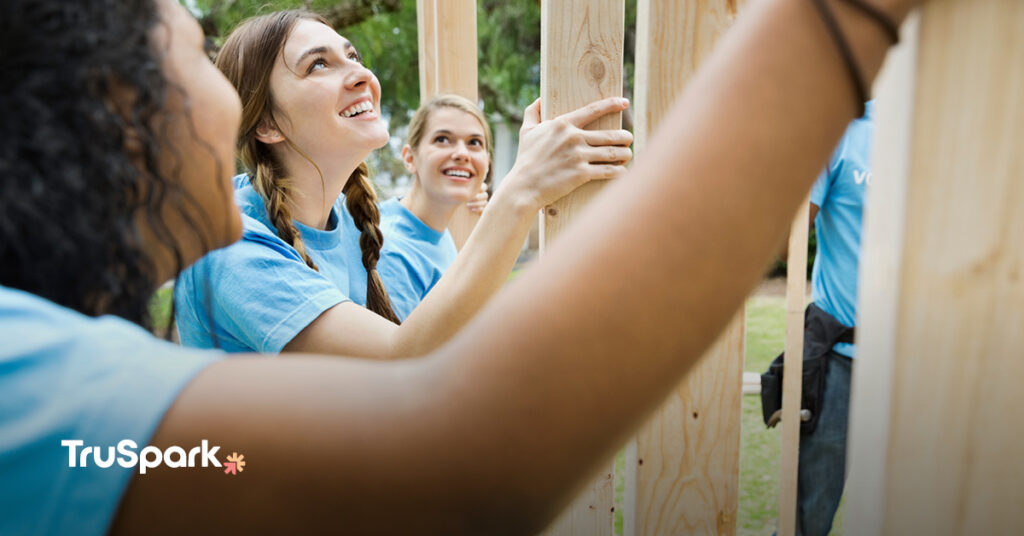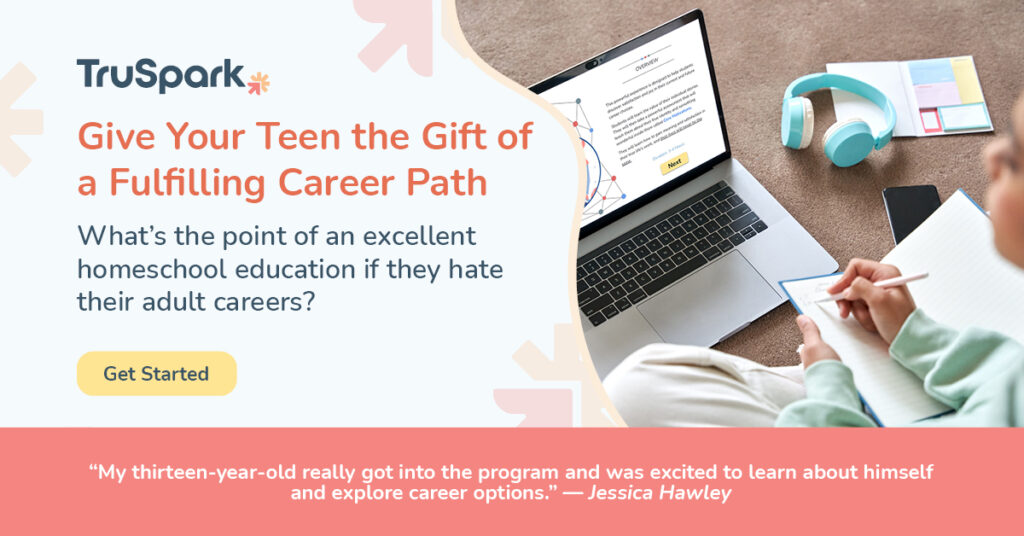When you parent a teen, your text threads fill up with (sometimes comical) distress calls. Here are approximations of actual texts I’ve received from my teenage daughter or teenage step-son:
- “We made it to the drive-in movie, but we can’t figure out how to get the radio onto AM.”
- “I need gas before I come home, but how do I know which side the gas tank is on?!”
- “Where does the stamp go? Right or left? I always forget how to mail a letter!”
- “The manager assigned me to work on Sunday even though I asked for that day off and she said it was okay! Do I still have to work that day?”
- “My lab director won’t reply to my email about the recommendation. And the deadline is coming up fast! What should I do?”
When you get these SOS messages, take note! These are real world life skills to teach your teen.
What Skills Should All High School Students Learn?
Even if the word adulting makes you cringe a little, your teen still needs to learn real world life skills to be a competent and independent young adult. While every young person leaves the nest with gaps in their understanding, you can build a foundation of self-sufficiency and confidence by investing in practical life skills while your middle schooler or high schooler is still living in your home.

So what life skills should teenagers learn? Besides taking a cue from the day-to-day situations that arise (and those SOS texts), here’s an outline of eight big categories (and specific examples) of functional skills for high school students.
1. Life Skill: Household and Automotive
- Basic sewing skills: replacing or reinforcing a button, repairing an open seam or hem
- How to use standard toolbox staples like a screwdriver, a hammer, pliers, etc. to tighten, loosen, etc.
- Checking car tire pressure, adding air
- Pumping gas and checking fluids
- What to do in case of a car accident
- How to plan meals and cook a few simple but satisfying meals from scratch
- How to do laundry, clean a bathroom, wash dishes, and organize a kitchen
2. Life Skill: Time Management
- How to divide a large task into manageable chunks and schedule them for a deadline
- Making appropriate time for recreation, rest/sleep, and social engagements alongside work or school obligations
- Keeping a calendar, setting reminders and alarms
- Time blocking schedules
- How to limit distractions for focused deep work
- How to catch up when you’re behind
3. Life Skill: Money Management
- Budgeting, saving, spending, and charitable giving
- Credit cards and credit ratings
- Online money processors (Venmo and Cashapp)
- How to file an income tax return
- How to apply for financial aid, ask for debt forgiveness, or negotiate a lower price
- How mortgages and loans work
4. Life Skill: Social Emotional Learning
The key to all social emotional learning is self-awareness and self-acceptance. Empathy, cooperation, compromise, and healthy personal boundaries all flow from that foundation.
Use tools like the TruSpark assessment to help young people understand their inner motivations. Although these motivations are directing all of their choices, they are such an inherent part of identity that many people are unaware of them or unable to name them.
TruSpark’s online sorting app uses your teen’s own personal stories as the basis for identifying their top three core motivations out of a list of nineteen. By identifying and appreciating their own unique traits, they can see their differences from others as special gifts.
The TruSpark framework gives teens a lens to interpret conflicts: Misunderstandings can arise when individuals approach a task through opposing core motivations. Realizing others have different motivations helps us communicate better and be tolerant of multiple perspectives.
Key social emotional skills:
- Self-awareness and self-acceptance
- Healthy romantic relationships and consent
- Collaborating with others on a team
- Personal boundaries
- Loyalty and dependability to those depending on you
- Anger management and impulse control
- Empathy
- Coping skills for anxiety and depression
- Using social media with discretion and healthy objectivity
- Standing up to bullies or social injustice

5. Life Skill: Communication Skills
Finally! An area of social skills that directly ties to an academic area! Communication skills fall nicely into the realm of language arts, but you’ll need to go beyond literary analysis and vocabulary for test prep.
Dig into these practical applications to help your teens be better communicators:
- Disagreeing and persuading without overly emotional pleas or attacks
- Email writing and management
- How to verbally ask for help or advocate for oneself
- Polite greetings, goodbyes, and introductions
6. Life Skill: Employment
Here are some startling facts about employment.
- A Gallup study revealed that only 13% of people believe they have meaningful work.
- Pew Research reports “Three-in-ten workers say their job is ‘just a job to get them by.’”
- Only 28% of Gen Z say they are satisfied with their work.
Since finding satisfaction in work is a key component of overall happiness, employment skills are a worthwhile addition to your life skills roster.
- Exploring potential careers
- Applying for jobs online
- Creating a resume
- Sending a professional email and following up on inquiries
- How to be interviewed (in person and via online conferencing)
- Entrepreneurship and the gig economy
The TruSpark curriculum has a section on career exploration so young people can discover the educational requirements of jobs, their forecast for growth, the work environments they entail, and so on. (Download a sample of the curriculum here.)
What makes TruSpark’s career exploration curriculum unique, though, is that it guides students through potential career paths that match their top 3 Core Motivations instead of being merely interest-based or aptitude-based.
Without crushing their dreams, it’s important for teens to realize that there are jobs beyond being a professional athlete, professional gamer, or a YouTuber—jobs that are not nearly as competitive as those yet incredibly lucrative and rewarding.
7. Life Skill: Self-care, Medical, and Wellness
- Making dental, vision, and medical appointments
- Identifying when help is needed and seeking out professional resources
- Prioritizing restorative hobbies, healthy friendships, and sleep
- Finding an outlet of physical exercise that you enjoy and incorporate into your regular routine
- Discovering what ratio of macronutrients are best for you and sticking to that diet as an ongoing lifestyle
- Basic first aid (and maybe emergency responses like CPR)
- How medical insurance works
- Recognizing healthy eating vs. eating disorders
8. Life Skill: Problem Solving
Problem solving ability grows as teens have experience in the other life skills areas.
While they have the safety net of your support is the ideal time to experiment with making choices—good and bad—and facing the results of those decisions. So be sure to give your high school students autonomy to make choices even when they result in small failures. As the stakes grow, so does their ability to problem solve.
- Know who and how to ask for help: Who’s in charge here and what’s the right protocol for getting help?
- Googling queries and evaluating sources of information for bias/misinformation
- How to organize documents/information, especially digital files, for future reference
What Do You Teach in a Life Skills Class?
Teens are prone to eye their school lessons with a suspicious “When will I ever use this?!” So they tend to enjoy learning life skills tied to what they perceive as practical information.
To teach a life skills class for teens, start with an inventory to discover what they already know about the key areas listed above and what they are most curious about. What do they think will be most important for them in the next 12 months, 2 years, and 5 years? Prioritize the information in that order, knowing that some concepts require revisiting in the future. It’s nearly impossible for a 16-year-old to truly grasp the importance of a credit score before they need to leverage credit for a large purchase. But you can lay that foundation now.
Once you’ve outlined your list of life skills to cover, use the tips below to formulate your own life skills class.

How Do You Teach Students Life Skills?
How did you teach your children to speak? To ride a bike? To tie their shoelaces? To make a bed? To politely receive a gift?
Learning life skills is the same as anything else they learned!
They either picked it up from you naturally by watching and simply absorbing (native language learning, for example), or you taught them explicitly, step by step, first showing them and then watching as they tried.
You modeled.
Teach Life Skills by Modeling
Modeling is the best way to teach students life skills and follows a very simple pattern:

- Adult does; teen watches.
- Teen does while adult assists.
- Teen does; adult watches.
1. Adult Does; Teen Watches
Perform the life skill in front of them, talking out loud to explain what you’re doing and why. Name the tools you’re using and why they are perfect for the job. Above all, be sure to explain your thought process. Go over different scenarios and how you’d handle them, providing a verbal flow chart of your decision making process.
2. Teen Does While Adult Assists
Then after your teen watches, let them attempt it as you stand by to assist. Make any needed suggestions or corrections. This is a key step that an impatient parent may skip. Be sure to provide support according to your teen’s needs in this intermediate stage.
3. Teen Does; Adult Watches
Finally, your teen is ready to do it alone as you stand by to observe. If you need to cycle back through earlier steps for more demonstrations or troubleshooting, this is the perfect time.
At the end of this three-part modeling process, your teen has experience with the particular life skill and can likely handle it solo the next time it arises!
Teach Life Skills with Outside Curriculum and Experts
As you consider teaching your high school students life skills, you may realize you have gaps in your own understanding and feel poorly equipped to model certain skills. Or maybe you’ve had your share of botched repair jobs or bounced checks and don’t really have the successful personal experience to pass along to your teen.
That’s okay! When you don’t have confidence in a particular area or you aren’t sure how to model something that you do grasp, rely on outside sources!
1. YouTube is a treasure trove of tutorials. There’s hardly any hands-on repair job that you can’t find a how-to for!
2. Find non-fiction books in your public library to guide you through a DIY unit study. First read, then do. You can learn alongside your teen instead of being the teacher!
3. Look for a specific curriculum that covers the skill your teen needs. There are courses for
4. Find experts who can do the teaching for you. This arrangement can be informal like an afternoon with a grandparent, aunt, or uncle demonstrating a certain life skill. Or it could be as structured as an internship or shadowing.
Why Should High Schools Require Life Skills Courses?
It’s one thing to be book-smart and make good grades in math and science; it’s quite another to have the practical know-how for day-to-day life as an adult. We’ve all known people who, despite their academic brilliance, seem to lack common sense or any have handles for the mundane tasks of personal finance, basic repairs and sewing, household management, or interpersonal communication. These people maintain a childish, somewhat helpless characteristic since they have to rely on others to bail them out of daily situations.
As parents, we want our children to have the leg up in solving their own problems and taking care of themselves. Of course, there’s nothing wrong with asking for help! But self-reliance develops a sense of confidence as a young adult navigates the world of work, self-care, and relationships.
For these reasons, high schools certainly should require life skills for high school students. Sadly, the heavy emphasis on standardized testing has narrowed the focus of most curriculum solely to what can be measured by bubbling in A, B, C, or D. Thus life skills aren’t a priority for most middle schools or high schools.
The good news is that any parent can invest in teaching life skills to the pre-teens and teens in their life. Homeschool families may have it a bit easier as they have control over their curriculum and schedule. They can devote time to life skills curriculum during their normal school day, find time during summer break, or easily make room for shadowing and internships. For families with kids in public or private schools, teaching life skills means investing more afterschool and weekend hours to these real world experiences. Either way, teaching your children real life skills is doable! It simply requires a deliberate commitment and the willpower to follow through.
